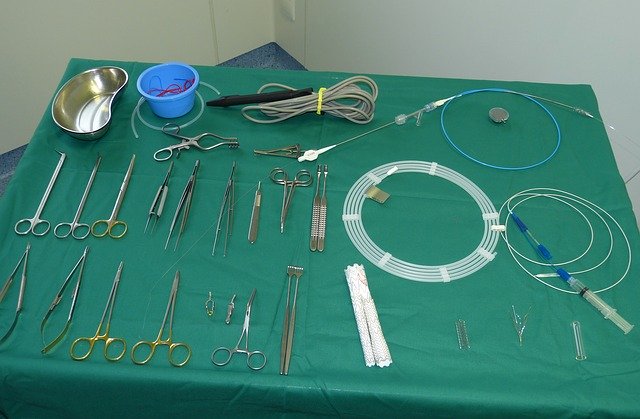Surgical instruments can vary widely by the field of surgery that they are used in. In general operating room instruments can be divided into five classes by function:
- Cutting and dissecting instruments:
- Scalpels, scissors, and saws are the most traditional
- Elevators can be both cutting and lifting/retracting
- Although the term dissection is broad energy devices such as diathermy/cautery are often used as more modern alternatives.
- Grasping or holding instruments:
- Classically this included forceps and clamps predominantly
- Roughly forceps can be divided in traumatic (tissue crushing) and atraumatic (tissue preserving, such as Debakey’s)
- Numerous examples are available for different purposes by field
- Hemostatic instruments:
- This includes instruments utilized for the cessation of bleeding
- Artery forceps are a classic example in which bleeding is halted by direct clamping of a vessel
- Sutures are often used, aided by a needle holder
- Cautery and related instruments are used with increasing frequency in high resource countries
- Retractors:
- Surgery is often considered to be largely about exposure
- A multitude of retractors exist to aid in exposing the bodies cavities accessed during surgery
- These can broadly be hand held (often by a junior assistant) or self retaining
- Elevators can be both cutting and lifting/retracting
- Tissue unifying instruments and materials:
- This would include instruments that aid in tissue unification (such as needle holders or staple applicators)
- And the materials themselves
Source: Wikipedia.org
All these instruments you will find at our online shop. Browse the tool you need for your hospital, clinic, department or other health care facilities. If you have any question, please feel free to contact us.

